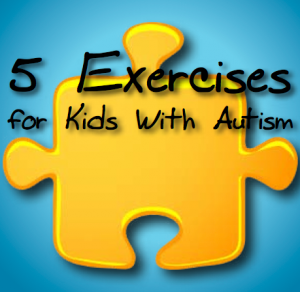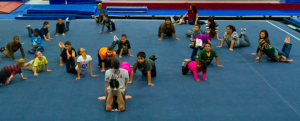 Hello to the readers of PatientTalk, and thank you for reading! This post comes from Seth McNew at Play Through Autism, a resource for kids with autism and their families, to develop better health and fitness habits. Please like our Facebook page and join our emailing list for an autism exercise e-book.
Hello to the readers of PatientTalk, and thank you for reading! This post comes from Seth McNew at Play Through Autism, a resource for kids with autism and their families, to develop better health and fitness habits. Please like our Facebook page and join our emailing list for an autism exercise e-book.
The honest answer is that youth fitness has the same end goals across the board:
1.) Give kids the tools, resources, and knowledge to understand their own fitness needs.
2.) Develop healthy life-long habits.
3.) Get kids moving – exercise begets exercise, and sitting begets more sitting.
4.) Finally, keep records of what the child liked and what they excelled at.
Now, if you are the parent of a child with autism, you will understand that the list is easier said than done for your child. That is why exercise is different for kids with autism. While the general population may have team sports, athletic motivations, and natural social play groups, we don’t always have those same amenities and possibilities in the youth population with autism.
This is one reason why the population of kids with autism has a 7% higher rate of obesity than the general population. While the end goals are the same for both sets of kids, the approach needed to get there may be very different. The same goals, as applied to our kids with autism may read something more like this:
1.) Make the learning process easier to provide better understanding.
2.) Use different prompts that promote habit formation, instead of just following commands.
3.) Find the right motivation that will get your child started, and help them to keep going.
4.) Finally, measure progress so that you know where you started, and where to go from that point on.
Sound familiar? That’s Applied Behavioral Analysis, as applied to exercise.
ABA Simplified for Autism Exercise
Applied Behavioral Analysis, ABA, is the practice of using rewards and consequences as behavioral reinforcement to encourage specific actions. ABA therapy goes much more in depth than that, but following basic principles can be important tools when planning exercise routines for children with autism. Here are the basic elements of ABA, as applied to exercise:
1. Making the learning process easier: ABA breaks actions down into basic building blocks and as the child masters a skill or motion, the action is made more difficult.
2. Different and Better Prompts: Physical and verbal prompts can both be used to help the young athlete work through new skills.
 3. Finding the Right Motivation: Positive Reinforcement (rewarding good actions, instead of punishing bad actions) is used to encourage activities the young athlete likes that are also beneficial to his or her health.
3. Finding the Right Motivation: Positive Reinforcement (rewarding good actions, instead of punishing bad actions) is used to encourage activities the young athlete likes that are also beneficial to his or her health.
4. Progress is Measured: Another important step is to measure the progress your child is making in his or her skill level and change the plan according to fitness goals.
5 Exercises for Everyday Fitness
We’ve developed a special, free e-book with 5 examples of appropriate exercises for kids with autism. You can get that instantly here.
Good luck with these exercises and get creative with making the exercises a little more complicated as they become too easy.